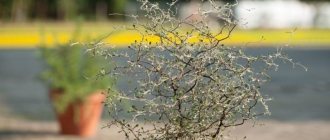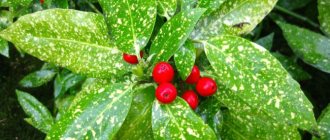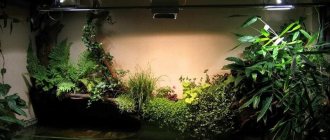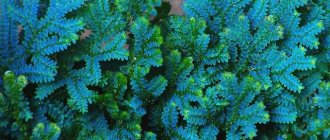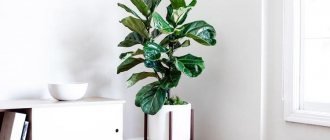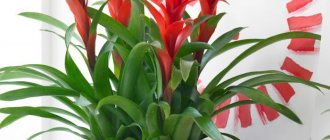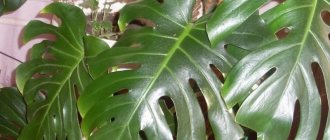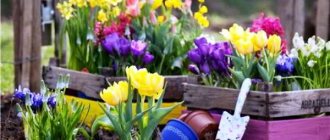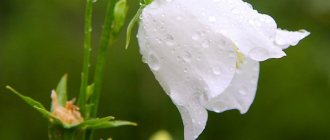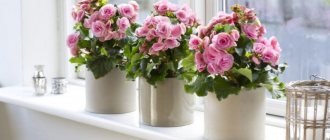Plants with decorative, colorful, large, bright and beautiful leaves add a special accent to the interior of any room. Sometimes you don’t need any other decor if you place a spectacular tree or bush on the table by the sofa in the living room.
Mostly the leaves of indoor plants are pink, but there are also purple and scarlet leaves. If you have long wanted to purchase an unusual bush that can transform a space with its appearance, we bring to your attention a list of beautiful indoor plants with colored leaves. In addition, most of them are not particularly demanding to care for, and therefore will take root well in your home.
Cordilina
A beautiful bush with decorative leaves, belonging to the Agave family and to the category of false palms. In general, there are many species of this plant, but some varieties are especially popular, since their plates are colored in certain shades in different intensities:
- Kiwi - intense crimson border;
- Apical - dark red color;
- Red - leaves, like fruits, can be from dark green to bright red;
- Purple compacta - most leaves are green, only a few have a dirty purple tint;
- Rumba - plates with white veins and scarlet edging;
- Tango is a small and neat tree with a lush tuft of leaves of an unusual brown color.
Caring for the plant does not require any special effort, but for the most decorative type of cordyline, you should follow some simple rules:
- diffused light;
- temperature regime - no higher than 22-23°C;
- moderate watering;
- During the growth period, fertilizing is required.
Sansevieria
All about decorative deciduous begonias
In floriculture, the plant was called “mother-in-law’s tongue” because of its sharp and long leaf blades. Grown as a pot crop since the 18th century. The flower is native to some regions of Africa and Asia.
Sansevieria is popular for growing in the home and office. The flower is notable for its beautiful leaves that grow up to 100 cm. They have a variegated color and a characteristic pointed shape. The plant is capable of purifying the air from pollutants and harmful compounds, but the juice is dangerous for humans - it can cause poisoning if it enters the stomach. It is not recommended to keep Sansevieria in rooms with small children and pets.
Croton or codiaum
A wonderful plant that pleases with the unusualness of its variegated leaves. However, it is not easy to care for it, since the culture is quite capricious and demanding in terms of living conditions. So that the bush pleases with its beauty, does not lose its decorative effect and does not die, strictly adhere to the following conditions:
- loves bright light, but it is better to protect the plant from direct sunlight;
- temperature conditions are different: in summer - from 20 to 22°C, in winter - not lower than 16°C;
- You need to water regularly, but moderately;
- Be sure to fertilize with complex mineral fertilizer.
Be careful! The leaves and stems of croton secrete poisonous juice, which can cause not the most pleasant consequences: vomiting, indigestion, allergies. Therefore, when working with a plant, you must wear gloves!
Caring for shade-loving plants
Shade-loving and unpretentious crops also require care.
Caring for green pets:
- Place away from direct sunlight. Can be placed on shelves, cabinets, tables in corners.
- When planting in a pot, use fertile soil for indoor flowers. Do not feed for 3-4 months.
- Feed with complex fertilizers.
- You can clean it from dust in the shower.
- Protect from drafts.
- Water as the soil dries.
- Spray with a spray bottle, maintaining humidity.
Irezine
Belongs to the amaranth family, uniting as many as 80 species of various plants. The varieties of Linden and Herbst are especially loved by flower growers.
The flower is not poisonous and cleans and oxygenates the air in the room well.
Irezine does not require any special growing conditions, and can “live” well even with novice gardeners. Basics of care:
- sunlight is needed;
- air temperature - from 16 to 25°C;
- you need to water abundantly and regularly;
- timely pruning to maintain decorativeness;
- replanting is carried out after the old container is filled with roots, at least once every 2-3 years.
general description
Decorative foliage plants easily retain their characteristic structure, as well as the incomparable shade of their leaves. They prefer good feeding, spacious containers and systematic watering. They love plenty of sunlight. They grow well on loggias, glazed balconies and greenhouses.
Indoor decorative foliage plants have a rich variety. This class includes a large number of different subspecies. Some of them are unpretentious, others require special attention.
Coleus
Where there is no limit to imagination is coleus. In most species, the leaves are painted in bright, catchy shades. There are single-color plates, but there are varieties in which they are painted in several shades at once. These bushes look very beautiful, and they are completely easy to care for. Moreover, in the summer they can be taken out into the garden and sent indoors for the winter.
Coleus are often grown on balconies.
The basics of care include:
- needs a lot of bright sunlight, but it is better to shade the flower from direct rays;
- summer temperature - from 18 to 20°C, but not lower than 12°C;
- water regularly and quite abundantly;
- to maintain the decorative effect, the crown must be correctly shaped to create a lush bush;
- replant once every 3 or 4 years;
- With the onset of spring and until autumn, coleus plants are fertilized once a week.
Planting, propagation and care
Household trees in pots wonderfully decorate the interior of an apartment or house. In order for plants to bloom and delight their owners, they need optimal care. Proper replanting, planting, watering and fertilizing are the key to healthy greenery.
The seedling brought from the store needs to be planted in a spacious pot. For replanting, soil specially selected for this variety is suitable. You should choose in advance the place where the flower pot will be located. It is necessary to take into account all the nuances. Some plants are afraid of sunlight, while others, on the contrary, cannot tolerate shade. At first, the seedling needs regular watering. To do this, it is better to use settled water at room temperature.
House flowers are propagated by seeds and cuttings. To get a cutting, cut off a leaf or part of the stem located on top. The cuttings are placed in a uniformly moistened earthen mixture. To create a greenhouse effect, the cuttings are covered with a glass jar.
When choosing an indoor tree, you need to familiarize yourself with the features of its cultivation in advance. In this case, the plant will delight its owners with its appearance for many years, delivering aesthetic pleasure and purifying the air.
Aglaonema
A species of tropical representatives that are very fond of professional flower growers and fans of indoor plants. Some varieties have beautiful wide leaf blades:
- Rounded - on a dark green background, thin red, carmine or pink stripes running along the veins are clearly visible.
- Red - Foliage can be red, pink or beet green.
- Crete is a fiery scarlet shade, on which green spots of varying degrees of intensity appear over time.
- Butterfly - combinations of red, yellow and deep marsh tones on one plate.
- Taivoli - the shade of the edging varies from pale pink to bright scarlet (the older the plant, the brighter the outline).
- Painted - a pattern on the leaves in the form of spots, varies in the silver-blue range.
Rules for keeping at home:
- diffused sunlight, slight shading;
- in winter without watering it can withstand up to +10 -15°C, in summer - +24°C;
- in the warm season, the soil should be moistened; in winter, watering should be reduced to once every 10 days;
- transplantation - once every 3 years.
Ivy
The most popular and unpretentious loach. It grows very densely; some varieties of ivy are grown to decorate the outer walls of houses. Despite the fact that he loves watering, he can easily tolerate dry air.
Its shiny leaves come in not only different colors, but also different shapes from oval to star-shaped. Unfortunately, it is a poisonous loach, so you need to make sure that pets and small children do not taste it.
Care:
- Frequent watering in spring and early summer.
- Fertilizing in spring and summer every 14 days for enhanced growth.
- Pruning branches in autumn stimulates their growth in spring.
- Likes to take a sunbath, does not grow well in the shade.
Begonia Royal
A hybrid species of the Begoniaceae family. The flower is distinguished by asymmetrical leaves, which have a beautiful pattern and unusual color, varying depending on the varietal characteristics. The shades of the leaf plates can be completely different: cherry, scarlet, pale pink, violet-green pattern and burgundy edging, rich red and others.
Basic growing rules:
- thanks to the large amount of diffused sunlight, the bush will delight with a bright crown;
- optimal temperature - 25°C;
- loves moist soil, but does not tolerate stagnation of moisture in the pot;
- perfectly tolerates frequent spraying;
- requires regular feeding.
Appearance
The appearance of the foliage of decorative indoor plants is very diverse and differs in shape, size, leaf outline and texture, not to mention pattern and color.
The range is enormous - soleirolia has tiny leaves, while monstera leaves reach 60 cm wide; Croton has whole leaves with smooth edges, and asparagus is proud of its unusual pinnate foliage.
The texture of the leaf itself can also be the most unpredictable : smooth, prickly, matte, shiny, velvety, corrugated, etc. The leaves can be completely green, or they can be variegated, multi-colored, with different veins, and so on.
Hypoestes
A genus of tropical plants of the Acanthus family. It has amazing foliage color, resembling a face covered with rainbow freckles. Perfect for those who like brightness in the interior. This is a type of branched shrub with unusual leaf blades. The main feature of the plant is the presence on the surface of many dots of different shades: red, white, pink, purple. Well, just like freckles!
The bush is quite unpretentious, it is very easy to care for:
- grows both in small rooms (but with good lighting!) and in the garden with other moisture-loving ornamental plants;
- temperature - from 22 to 25°C, but not less than 17 degrees;
- watering should be plentiful;
- To make the foliage brighter and the shade more clearly visible, use fertilizer with a high potassium content.
Hibiscus
The Chinese rose fits perfectly into the interior of an apartment or office. With proper care, it grows up to 1.5-2 m in height. Chinese hibiscus is a long-lived plant. Under favorable conditions, it lives for several decades. Large green branches forming the crown are its decoration. If you properly care for a Chinese rose, it will thank its owner with beautiful blooms. Hibiscus flowers are bright, large, with large petals. The Chinese rose is unpretentious in care. For full growth, regular watering and spraying is sufficient. Hibiscus can grow in artificial light, in rooms completely devoid of natural light.
Maranta
A tropical flower with an unusual color. The foliage itself is bright green, with clearly visible spots and veins of a red hue. The plant does not require special care. The main thing is to maintain optimal temperature conditions, water in a timely manner, trim dry leaves and replant 2 times a year with the arrival of spring.
An interesting feature of arrowroot is that the upper surface of the leaves is much brighter than the lower surface. This is more than noticeable when the bush lifts its leaves in the evening and folds them slightly.
Groups of decorative foliage plants
Here are the main groups that unite one or more botanical species of decorative foliage crops.
Ferns
Low-growing shrubs - flowering and decorative foliage for the garden
A group of the oldest plants on Earth, in nature they form dense thickets in the undergrowth of humid forests. Small emerald-colored leaves are arranged in rows on tall shoots that may droop. The variety of ferns includes: Nephrolepis, Adiantum (curly fern), Pteris cretanum and xiphoid, Pellea rotundifolia, ovate, glabrous. An epiphytic fern is Davallia, which forms aerial roots. In nature, they are needed to cling to trees, which are the “home” for ferns. The Blechnum fern species is often confused with the palm tree. The shoots of this plant can reach a height of 1 m.
Note! The most decorative and demanding of heat and moisture is the Adiantum Venus hair fern.
Palm trees
Palms are a large group of plants adapted to a wide range of conditions: from severely dry with full light to wet and shady. They are quite easy to grow at home. The life form of palm trees is trees of varying heights with a well-defined trunk, which can be densely covered with hairs.
For most palm trees to overwinter, a decrease in ambient temperature and humidity is necessary. With the arrival of spring and summer, the optimal air temperature for them is 23-25 °C. The most decorative are Washingtonia filamentosa, Canarian date, and Trachycarpus Fortune.
Ampelous plants
Hanging plants are climbing or vines that are very popular for creating decorative green walls. Ivy is unpretentious and shade-tolerant, does not require abundant watering, and purifies indoor air well. Tradescantias are traditional and very unpretentious. When choosing a climbing plant, pay attention to whether the crop forms sucker shoots or not.
Important! In some cases, bushes can damage the wall cladding and require the organization of special trellises.
Succulents
This decorative foliage form is adapted to bright light and mild drought, has fleshy leaves, and very limited growth. Modern species have leaves of different colors. In design they are used to create miniature gardens.
Succulent species include Morgan's sedum, plated aeonium, wavy cotyledon, tirucalli spurge, pearly haworthia, Rowley's ragus.
Note! Succulents at home are susceptible to rot; the watering regime should be strictly observed without sudden fluctuations in soil moisture.
Ginura
An evergreen subshrub with delicate velvety leaves, which are sometimes colored purple underneath. This creates an unusual feeling. The veins on the plates can also be painted in a similar color.
The plant is not capricious, great for beginner gardeners:
- bright light, but in the hot season it is better to shade the bush;
- temperature - from 18 to 24°C;
- water abundantly as soon as the top layer of soil dries out;
- feed during active growth once every two weeks.
Subscribe to our Social networks
Indoor eucalyptus
Medicinal eucalyptus is a useful home plant. It effectively purifies the air, making it healthier by releasing phytoncides that kill harmful bacteria.
Eucalyptus of the myrtle family was brought to us from Australia. At home, the plant takes on a compact pyramidal shape. It stretches up to 150 cm in height. Eucalyptus loves sufficient lighting and moderate watering. Resistance to diseases and pests is its characteristic feature. Young eucalyptus needs to be replanted annually. During the period of active growth, it must be fed twice a month.
Indoor plants with decorative leaves (names and photos)
There are a wide variety of plants with decorative leaves, differing in the form of development and growth, length, height, color and many other characteristics. We propose to consider the most common indoor plants with decorative leaves, which are often used for landscaping in homes and offices.
Fatshedera Lizei (Fatshedera lizei)
A hybrid of ivy and aralia - fatshvdvra Litse x Fatshedera - is a hybrid of aralia (Fatsia japonica) and ivy (Hedera helix). On thin vertical shoots up to 1.5 m long, five-lobed dark green shiny leaves grow, which in Fatshedera lizei 'Variegata' are decorated with a white pattern.
Family. Araliaceae (Araliaceae).
Location. Light or semi-shaded.
Temperature. Indoor, about 10°C in winter.
Air humidity. If the plant remains in a heated room in winter, it needs to be sprayed frequently.
Substrate. Flower soil mixture.
Watering. Moderate, even less during the rest period.
Feeding. In summer every 2 weeks.
Transfer. Annually in a larger pot.
Trimming. Shorten the shoots by 1/4 in the spring, so the plant will form denser.
Reproduction. Apical cuttings, including those with a preliminary cut.
Pests, diseases. Aphids.
Important! In summer you can put it outside in a shady place. Look at these plants with decorative leaves in the photo, which shows adult specimens:
Look at these plants with decorative leaves in the photo, which shows adult specimens:
Aralia (Fatsia japonica)
The young plant quickly reaches 1.5 m in height. Very large seven- and nine-lobed leaves are located on a short trunk; the upper side of the leaves is shiny, the lower side is matte. There is a variety with variegated yellow-green leaves, Fatsia japonica 'Variegata', however, it is sensitive to cold weather.
Family. Araliaceae (Araliaceae).
Homeland. Japan.
Location. Light.
Temperature. Room.
Air humidity. Tolerates dry air.
Substrate. Flower soil mixture.
Watering. In summer twice a day, in winter only maintain moderate humidity.
Feeding. Every week in summer, once every 6 weeks in winter.
Transfer. If necessary.
Reproduction. Apical cuttings, including those with a preliminary cut, seeds.
Pests, diseases. Spider mites, aphids.
Important! In summer it should be placed outside in partial shade. Aralias grow big and beautiful if they are in a large enough pot.
Carefully! Contains polyines (toxic substances). Take a close look at these plants with decorative leaves in the photo and the names will be etched in your memory for a long time:
Take a close look at these plants with decorative leaves in the photo and the names will be etched in your memory for a long time:
Common ivy (Hedera helix)
There are many different varieties of Hedera helix, including some that are suitable for less-than-light locations. All have the same leaf shape, from three to five lobes, leathery.
Family. Araliaceae (Araliaceae).
Homeland. Subtropics.
Location. Variegated varieties require a lot of light. Green varieties are well suited for a north window.
Temperature. Room required. Variegated varieties are more thermophilic, not lower than 15 °C.
Air humidity. High in warmth; provide artificially.
Substrate. Flower soil mixture.
Watering. Keep the substrate moist at all times, use water at room temperature.
Feeding. Every week in summer, once every 4 weeks in winter.
Transfer. Every year.
Reproduction. Apical cuttings in water.
Pests, diseases. Rarely.
Carefully! The berries are very poisonous. The plant contains substances that irritate the skin and mucous membranes
Below are these indoor plants with decorative leaves in the photo, illustrating the possibilities of use for decorative purposes:
